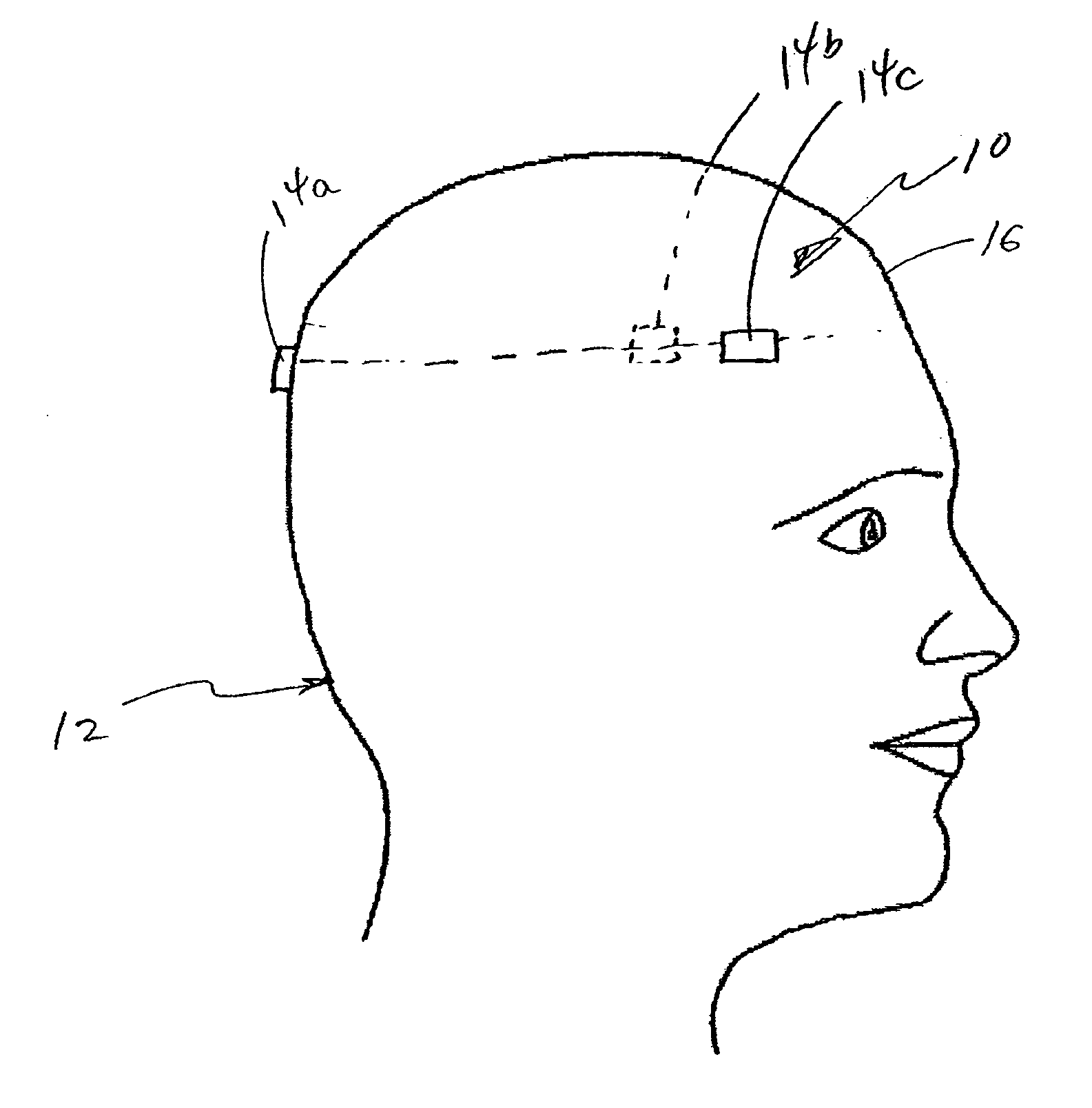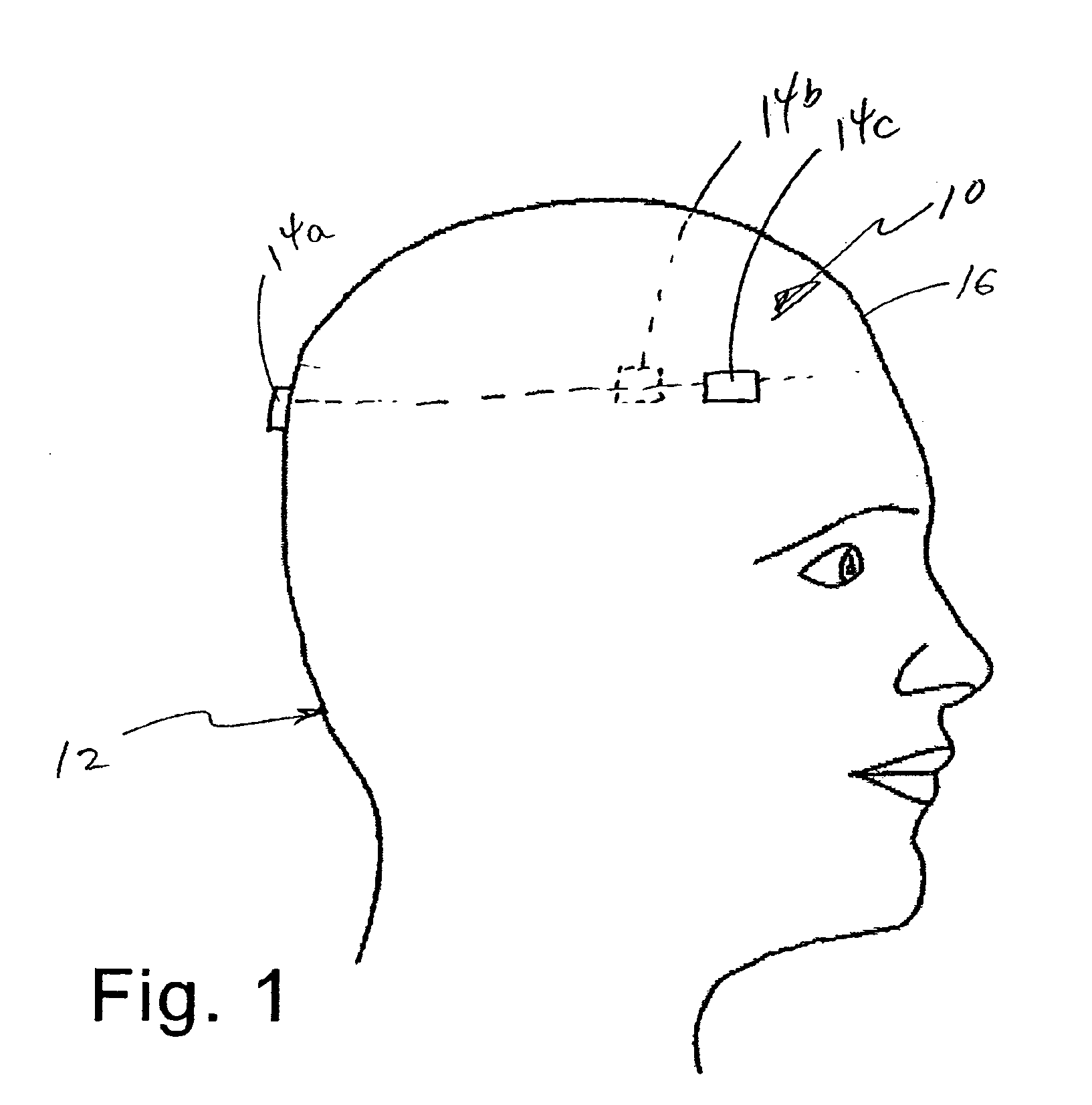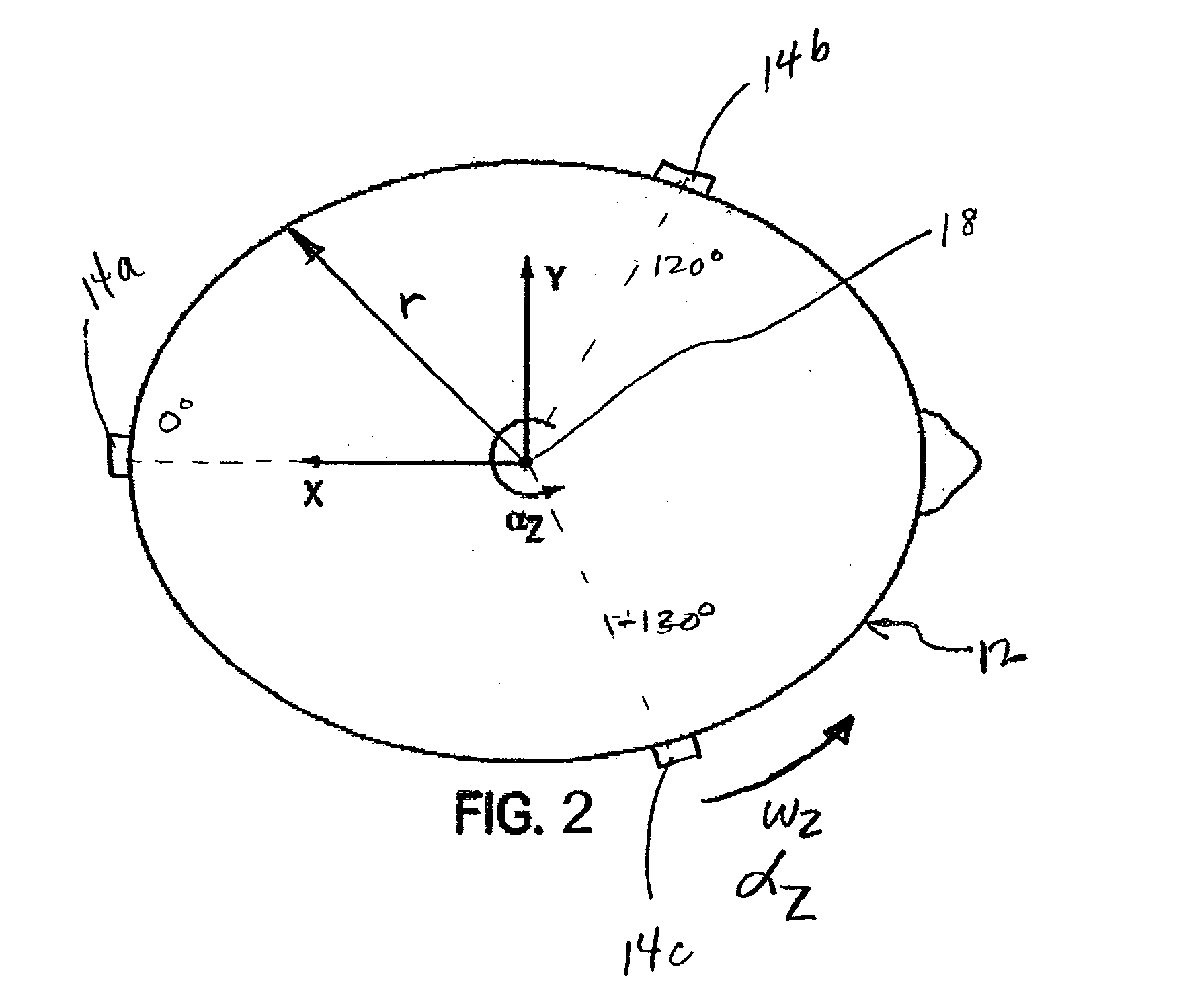System and method for measuring the linear and rotational acceleration of a body part
- Summary
- Abstract
- Description
- Claims
- Application Information
AI Technical Summary
Benefits of technology
Problems solved by technology
Method used
Image
Examples
Embodiment Construction
[0043] While this invention is susceptible of embodiments in many different forms, there is shown in the drawings and will herein be described in detail preferred embodiments of the invention with the understanding that the present disclosure is to be considered as an exemplification of the principles of the invention and is not intended to limit the broad aspect of the invention to the embodiments illustrated.
[0044] The present invention provides a system and method for measuring, i.e. estimating, the linear and rotational acceleration of a body part. For ease of illustration, the body part will be described below as a human head. Unlike the prior art, the present invention uses single axis accelerometers orthogonal to the surface of the body part and not necessarily orthogonal to each other to enable the estimation of both the linear acceleration and rotational acceleration of the body part.
[0045] Referring first to FIG. 1, a side view of an installed system 10 of the preferred ...
PUM
 Login to View More
Login to View More Abstract
Description
Claims
Application Information
 Login to View More
Login to View More - R&D
- Intellectual Property
- Life Sciences
- Materials
- Tech Scout
- Unparalleled Data Quality
- Higher Quality Content
- 60% Fewer Hallucinations
Browse by: Latest US Patents, China's latest patents, Technical Efficacy Thesaurus, Application Domain, Technology Topic, Popular Technical Reports.
© 2025 PatSnap. All rights reserved.Legal|Privacy policy|Modern Slavery Act Transparency Statement|Sitemap|About US| Contact US: help@patsnap.com



